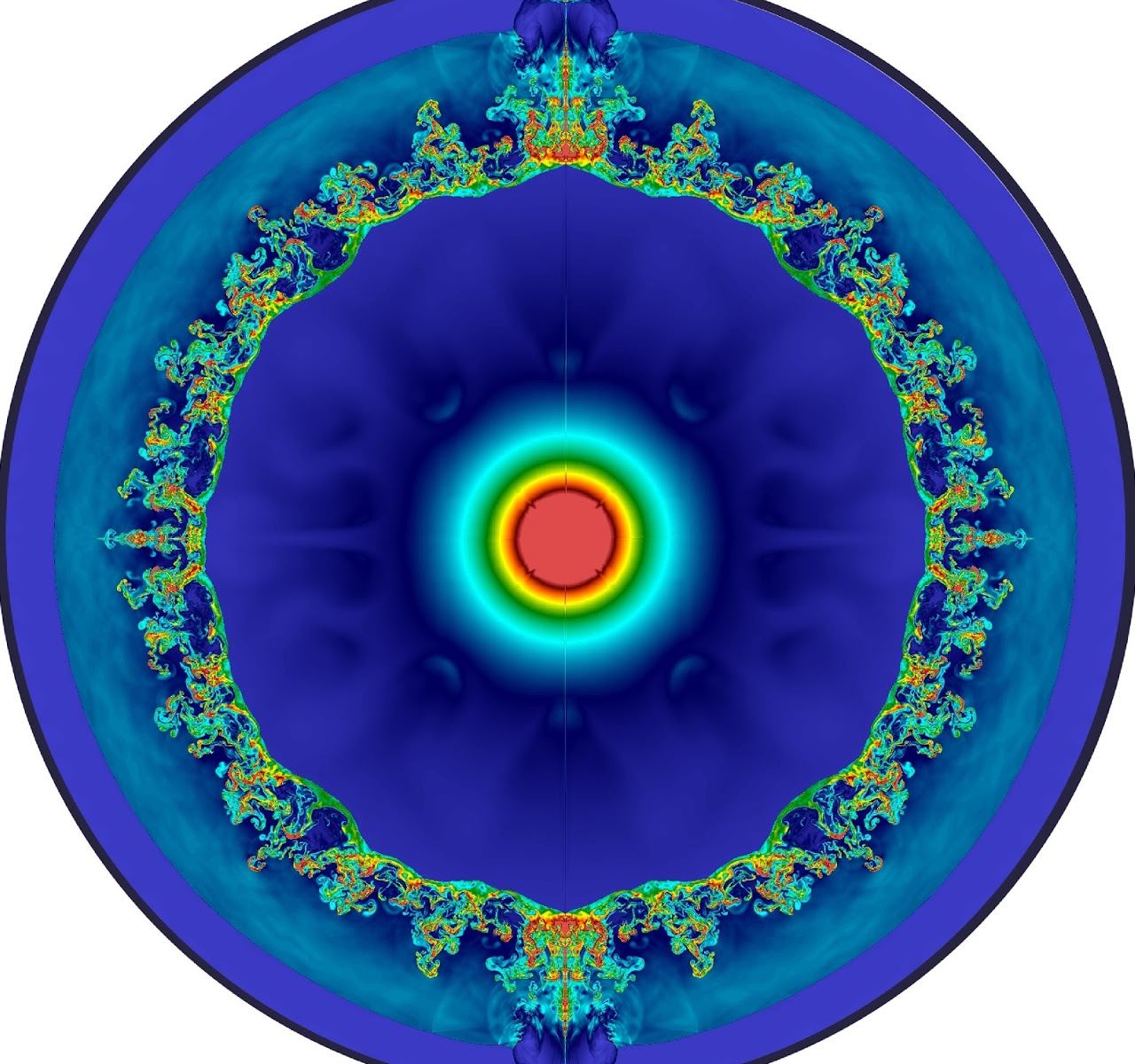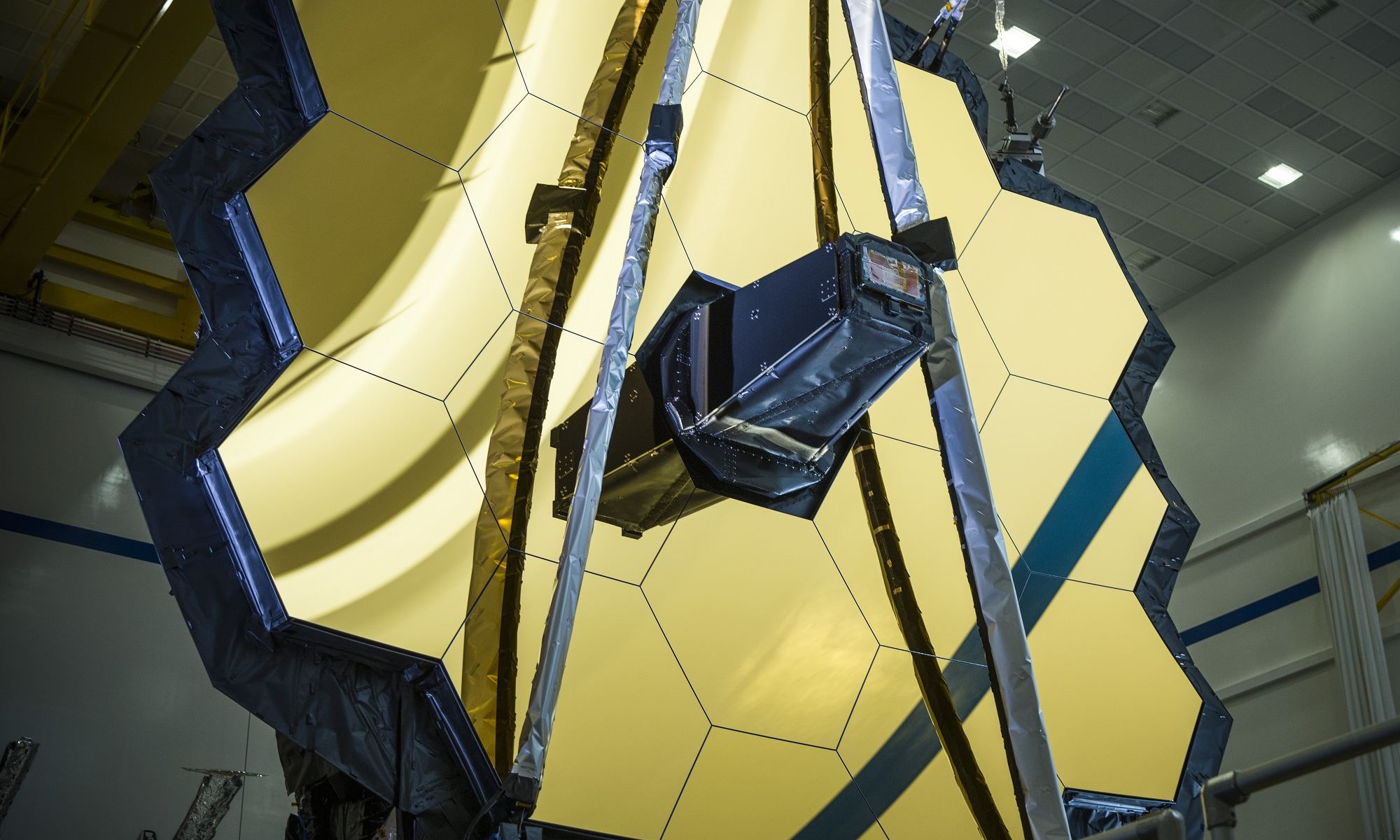
Posted on July 21, 2020
Supercomputer Simulation Shows a Supernova 300 Days After it Explodes
The answers to many questions in astronomy are hidden behind the veil of deep time. One of those questions is around the role that supernovae played in the early Universe. It was the job of early supernovae to forge the heavier elements that were not forged in the Big Bang. How did that process play out? How did those early stellar explosions play out?
A trio of researchers turned to a supercomputer simulation to find some answers.
Continue reading “Supercomputer Simulation Shows a Supernova 300 Days After it Explodes”
Posted on July 21, 2020
They’re In! The First Images From ESA’s Solar Orbiter
While actually walking on the sun is still just a dream of Smash Mouth fans, humanity has gotten a little bit closer to our nearest solar neighbor with the recent launch of the European Space Agency’s Solar Orbiter (SolO).
SolO has just produced its first round of photographs of the sun in action and they are already revealing some features that have been unseen until now. Those features might even hold the key to understanding one of the holy grails of heliophysics.
Continue reading “They’re In! The First Images From ESA’s Solar Orbiter”
Posted on July 21, 2020
James Webb Completes a Comprehensive Systems Test for the First Time
In 1996, NASA began working on the James Webb Space Telescope (JWST), a next-generation infrared observatory that would be a total game-changer. And next year, after multiple delays, cost overruns, and exhaustive testing, the observatory will finally take to space. Despite an additional delay forced by the outbreak of COVID-19, NASA recently announced that it is targeting Oct. 31st, 2021, as the launch date.
In other good news, teams at NASA’s Goddard Space Flight Center took advantage of the fact that the JWST is now fully-assembled to conduct the highly-critical software and electrical analysis known as the Comprehensive Systems Test (CST). This was the first time that a full systems-evaluation was conducted on the fully-assembled vehicle, and will help ensure that the JWST will function in space when the time comes!
Continue reading “James Webb Completes a Comprehensive Systems Test for the First Time”
Posted on July 21, 2020
A Neptune-class exoplanet has been found with its atmosphere stripped away
What happens when a giant planet gets stripped of its atmosphere? It leaves behind a giant core, rich in iron and other metals. A team using NASA’s TESS mission recently found such a remnant core, orbiting a star just 730 light-years away.
Continue reading “A Neptune-class exoplanet has been found with its atmosphere stripped away”
Posted on July 20, 2020
Roman Space Telescope and SOFIA Get Their Funding Restored… Again
In May of 2020, NASA made the decision to give the next-generation Wide Field Infrared Space Telescope (WFIRST) a proper name. Henceforth, it would be known as the Nancy Grace Roman Space Telescope (or Roman Space Telescope) in honor of NASA’s first Chief Astronomer and a woman’s who tireless work in the field of STEMs research led to the creation of the Hubble Space Telescope – hence her nickname, the “mother of Hubble”).
However, in recent months, the budget environment has not been too favorable to the Roman Space Telescope (RST), as well as education-related programs. But thanks to a recent bill considered by the House Appropriations Commitee, funding has been restored to five NASA science missions and projects – including the RST – that the administration’s budget proposal sought to cancel for the coming year.
Continue reading “Roman Space Telescope and SOFIA Get Their Funding Restored… Again”
Posted on July 20, 2020
A Star had a Partial Supernova and Kicked Itself Into a High-Speed Journey Across the Milky Way
Supernovae are some of the most powerful events in the Universe. They’re extremely energetic, luminous explosions that can light up the sky. Astrophysicists have a pretty good idea how they work, and they’ve organized supernovae into two broad categories: they’re the end state for massive stars that explode near the end of their lives, or they’re white dwarfs that draw gas from a companion which triggers runaway fusion.
Now there might be a third type.
Posted on July 20, 2020
Mount Everest, Seen from Space!
One under-appreciated space asset is the photography skills of the Russian cosmonauts on board the International Space Station. They are extremely skillful photographers who don’t get the same recognition as their astronaut counterparts in their Earth observation skills. In particular, they have taken some stunning high-oblique shots of objects close to the horizon, with almost an 3-D effect.
Continue reading “Mount Everest, Seen from Space!”
Posted on July 20, 2020
Astronomers Do the Math to Figure Out Exactly When Johannes Vermeer Painted this, More than 350 Years Ago
Most of us will be forgotten only a generation or two after we pass. But some few of us will be remembered: great scientists, leaders, or generals, for example. But we can add history’s great artists to that list, and one in particular: Johannes Vermeer.
Vermeer was largely ignored during the two centures that followed his death, and died as other painters often did: penniless. But as more time has passed, the Dutch Baroque painter has grown in reputation, as historians increasingly recognize him as a master.
Posted on July 20, 2020
What Shuts Down a Galaxy’s Star Formation?
In the 1920s, Edwin Hubble studied hundreds of galaxies. He found that they tended to fall into a few broad types. Some contained elegant spirals of bright stars, while others were spherical or elliptical with little or no internal structure. In 1926 he developed a classification scheme for galaxies, now known as Hubble’s Tuning Fork.
 Hubble’s tuning fork diagram for galaxies. Credit: Edwin Hubble
Hubble’s tuning fork diagram for galaxies. Credit: Edwin Hubble
When you look at Hubble’s scheme, it suggests an evolution of galaxies, beginning as an elliptical galaxy, then flattening and shifting into a spiral galaxy. While many saw this as a reasonable model, Hubble cautioned against jumping to conclusions. We now know ellipticals do not evolve into spirals, and the evolution of galaxies is complex. But Hubble’s scheme marks the beginning of the attempt to understand how galaxies grow, live, and die.
Continue reading “What Shuts Down a Galaxy’s Star Formation?”
Posted on July 18, 2020
The Moon Might Have Formed a Little Later than Originally Believed
According to the Giant Impact Hypothesis, the Moon formed when a Mars-sized object (named Theia) collided with Earth billion years ago, at a time when the Earth was still a ball of magma. This event not only led to the Earth-Moon system we recognize today, it is also beleived to have led to the differentiation of the Earth’s core region into an molten Outer Core and a solid Inner Core.
However, there has been an ongoing debate as to the timing of this impact and how long the subsequent formation of the Moon took place. According to a new study by a team of German researchers, the Moon formed from a magma ocean that took up to 200 million years to solidify. This means that the Moon finished forming about 4.425 billion years ago, or 100 million years later than previously thought.
Continue reading “The Moon Might Have Formed a Little Later than Originally Believed”
Source










